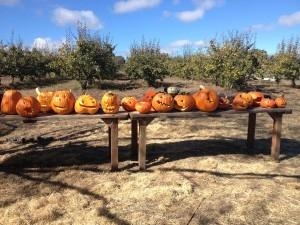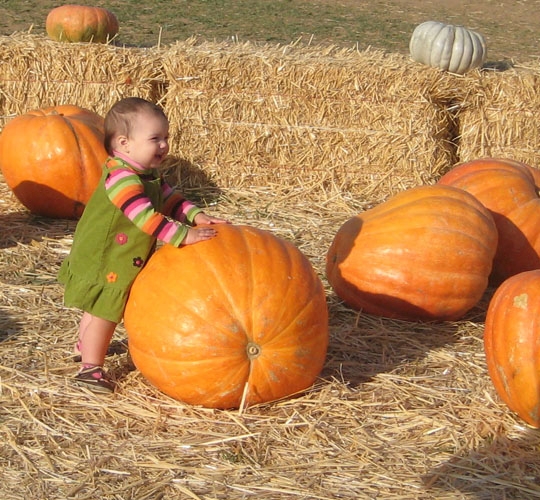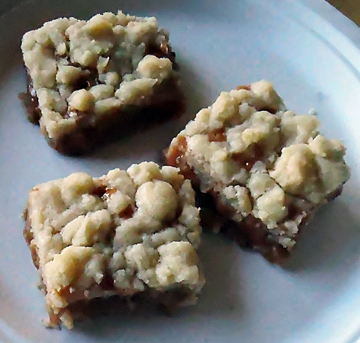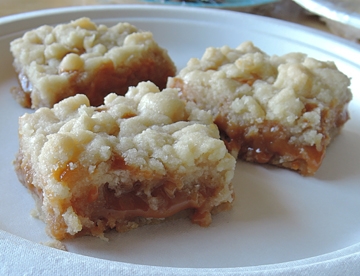UC Food and Agriculture Blogs
It's October - Take the kids to a farm!
Before Halloween comes the harvest festival and the pumpkin patch.
Although most of us don't live on farms or have relatives who farm, the shortening days and the crispness in the air still remind us somehow that it's harvest time. All over California, farmers are opening their gates and sharing their harvest celebrations with the rest of us. What better time to make sure the kids know where pumpkins, corn, and everything else they eat comes from?
Here are some family-friendly harvest celebrations coming up soon:
- Sierra Oro Farm Trail Passport Weekend, Butte County - Saturday & Sunday, Oct. 11, 12
Passport holders can set their own pace, take self-guided tours of the scenic agricultural trails, meet local farmers and winemakers and sample the amazing bounty of locally-owned wineries and specialty farms located throughout Butte County. - Shone Farm Fall Festival, Santa Rosa - Saturday, Oct. 11
The festival, which marks the Farm's 42nd year, will include activities such as apple pressing, a rotten tomato slingshot game, pumpkin and vegetable picking, hayrides and tours of the 365-acre farm and forest. Santa Rosa Junior College Agriculture & Natural Resources Department students will demonstrate wood milling, compost making, lead tours and introduce visitors to the farm's horses, sheep and chickens, and talk about their upkeep. In addition, children can have their faces painted and make stick horses and other crafts. This free festival runs from 11 a.m. – 3 p.m. on Saturday, Oct. 11. The farm is located at 7450 Steve Olson Lane, Forestville. For more information, visit shonefarm.com. -
Stehly Farms Organic Pumpkin Patch, San Diego - Sunday, Oct. 12
Kids are back in school, the nights are (hopefully) getting cooler, and fall is here! What better way to celebrate than some pumpkin picking? Pumpkin Picking. Tractor Rides. Farm Stand. Devil Dogs BBQ. Market Juices. All Ages Welcome! $6, Kids 4 and Under Free - Farm & Barn Tour, Placer County - Sunday, Oct. 12
The whole family will enjoy the PlacerGROWN Farm & Barn Tour, a FREE self-guided expedition of farms, ranches, and vineyards in the beautiful countryside of Placer County. Each farm venue will feature different activities, tours, and demonstrations. Locally grown produce, meats, wine, and more will be available for purchase. Learn more
- PlacerGROWN Harvest Festival, Rocklin - Saturday & Sunday, Oct. 18, 19
Don't miss the PlacerGROWN Harvest Festival, a FREE event of family fun including a pumpkin patch, pumpkin lighting display at dusk, movie in the park, scarecrow building contest, farmers' market and more.
- Work Day & Barn Dance, Pescadero - Saturday, Oct. 18
Celebrate the spirit of community with Pie Ranch at this monthly ritual of touring or working together on the ranch, sharing locally grown food, and then spinning, laughing and dosey-doing together into the night. - Marin Agricultural Land Trust (MALT) Day at the Pumpkin Patch, Nicasio - Sunday, Oct. 19
Pick an organic pumpkin, make your own cheese, taste local Marin wine and beer, pick up locally sourced sandwiches, salads and burgers from The Farmer's Wife and Stemple Creek Ranch, and let the kids go crazy with crafts at MALT Day. This event is free and open to the public. - Live Earth Farm Harvest Festival, Watsonville - Saturday, Oct. 25
Celebrate the Bounty of the Pajaro Valley and the Monterey Bay Area! Join us for fun on the farm for the whole family. Honor the changing of the seasons and celebrate the Harvest with us on the farm.
These and many more farm and ranch events can be found on the UC Agritourism Directory, www.calagtour.org, managed as a public service by the UC Small Farm Program.
Have fun!
The Biology of Farm Size
For those of us in the local food movement, size does seem to matter when it comes to farms and ranches. Smaller, family-operated farms are the darlings of the burgeoning farm-to-fork effort - and with good reason. Smaller farms and ranches...
Bed Bug Monitors
[From the December 2012 issue of the UC IPM Retail Nursery & Garden Center News] After decades of relative obscurity, bed bugs (Figure 1) are exhibiting a global resurgence. In the United States, the Northeast and Midwest regions have been...
UC IPM's Resources in Spanish
National Hispanic Heritage Month (September 15 – October 15) celebrates the contributions, culture, and history of Hispanic and Latino Americans originating from Spain, Mexico, Puerto Rico, Central America, and South America. These Americans make...
The best of the best: salted caramel butter bars
What does it take to win the best-of-show award for baked goods at a county fair?
Well, if you're Angelina Gonzalez, an alumnus of the Sherwood Forest 4-H Club, Vallejo, and now the Solano County's 4-H SET (Science, Engineering and Technology) Program representative, sometimes practice makes perfect, and sometimes perfect doesn't need practice.
Gonzalez's salted caramel butter bars swept all five awards in the adult baked goods section of the 2014 Solano County Fair. Judges first awarded the bars a blue ribbon, and then best-of-division, followed by the sweepstakes award and the coveted best-of-show.
"I've been entering cookies in the adult baked foods department for the past few years and have done well in the past," Gonzalez said. "I love baking and cookies are my specialty. This year, I attempted a recipe that I had never made before. It was a bit of a risk, but I wanted to try something new rather than another cookie recipe. I'm glad I did."
Its origin? Gonzalez selected the recipe on the Internet. (Shelly, the person who posted it several years ago, describes herself as "an addict of the buttercream sort.")
Gonzalez acknowledged it is not "the healthiest recipe out there (with a pound of butter and 50 caramel candies)," but the judges pronounced it absolutely delicious, the kind of bar cookie that folks would go back for seconds or thirds.
"Although I never took a 4-H food project, I am thankful to 4-H for everything that I have learned through it," Gonzalez said. "I started 4-H when I was nine years old and quickly learned that I loved it. The following years, I became an active member our Sherwood Forest 4-H Club as historian, treasurer, vice president, and president."
She enrolled in many different projects, including arts and crafts, ceramics, rabbits, dogs, dairy goats, horses, and leadership, receiving multiple awards at fairs. Among them: first place in novice and senior showmanship and various best-of-show awards and outstanding 4-H exhibitor awards.
"I would definitely say that 4-H gave me confidence and life skills for the future," said Gonzalez, who holds a master's degree in sociology from Sacramento State University. "After aging out of the program and a year off, I came back to 4-H (Sherwood Forest 4-H Club) as an arts and crafts project leader."
She just completed her seventh year as a project leader. Her work is much appreciated; she recently received the Solano County 4-H Alumni Award. "I love 4-H and look forward to where it takes me next," she said.
4-H'ers celebrate National 4-H Week every October. Youths and adult volunteers who want to sign up for the youth development program should contact their county 4-H program or the statewide office for more information.
Here's the prize-winning recipe, not only perfect for the holidays but for any occasion.Salted Caramel Butter Bars
Ingredients
For the Crust:
- 1 lb. salted butter, room temperature
- 1 cup sugar
- 1-1/2 cups powdered sugar
- 2 tablespoons vanilla (or use Princess Cake Emulsion)
- 4 cups all purpose flour
- 1 bag (14 oz.) caramel candies (about 50 individual caramels), unwrapped
- 1/3 cup milk or cream
- 1/2 teaspoon vanilla
- 1 tablespoon coarse sea salt (optional) (*see No. 7 below)
Instructions:
- Preheat oven to 325°
- In a large bowl, combine the butter and sugars. Using mixer on medium speed, beat together until creamy. Add the vanilla and beat until combined. Sift the flour into the butter mixture and beat on low speed until a smooth soft dough forms.
- Spray a 9x13 inch baking pan lightly with non-stick cooking spray. Press one-third of the dough evenly into the pan to form a bottom crust. Wrap remaining dough in plastic wrap and chill in refrigerator.
- Bake crust until firm and the edges are a pale golden brown approximately 20 minutes. Transfer pan to a wire rack and let cool about 15 minutes.
- While the bottom crust is baking and the remaining dough is chilling, make the caramel filling. Place the unwrapped caramels in a microwave-safe bowl. Add the cream. Microwave on high for 1 minute. Remove from the microwave and stir until smooth. If caramels are not completely melted, microwave on high for 30-second intervals, stirring after each interval, until smooth.
- Once the caramel is melted, add in your 1/2 teaspoon vanilla and stir until combined.
- Pour the caramel filling over the crust. If you are going to salt the caramel, sprinkle it on caramel layer now.
- Remove the remaining chilled dough from the refrigerator and crumble it evenly over the caramel.
- Return the pan to the oven and bake until the filling is bubbly and the crumbled shortbread topping is firm and lightly golden, about 25 to 30 minutes.
- Let cool before cutting into squares.
Next step? Enjoy! P.S.: There will be no leftovers.
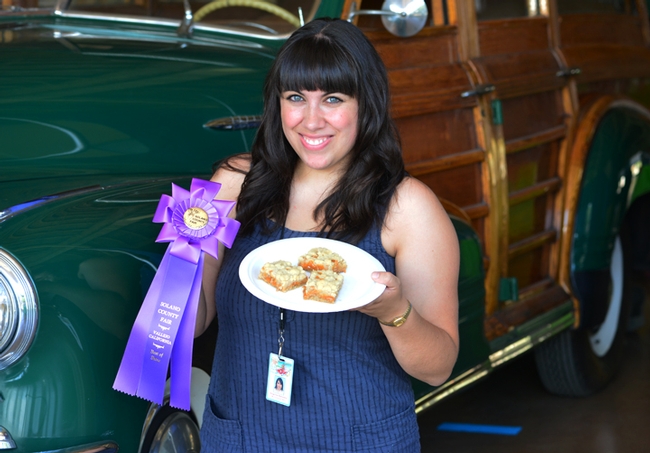
4-H enthusiast Angelina Gonzalez with her best-of-show salted caramel bars, Solano County Fair. (Photo by Kathy Keatley Garvey)



